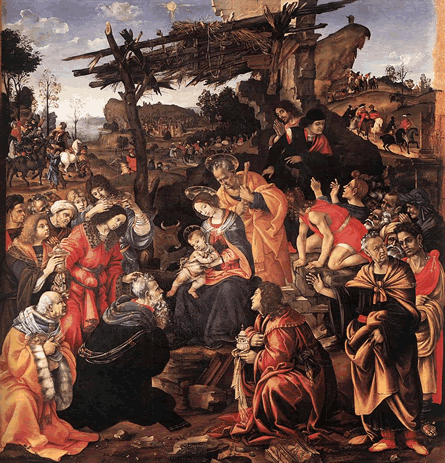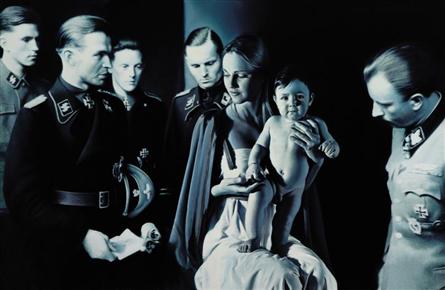From Here to Here
Saturday, September 02, 2006
The first "here" is here: Adoration of the Magi (1496) by Filippino Lippi.

And the last "here" is here: Epiphany (Adoration of the Magi) 1996 by Gottfried Helnwein.

The theme of the paintings is the same, yet the story and motive behind them are quite different.
As we all know, high renaissance painters were paid by religious leaders to create specific imagery to show how powerful and wholly they were. In the first instance, da Vinci was commissioned the original Adoration of the Magi, however, he was known to be a bit of procrastinator and he didn't like to finish commissioned painting. In the end, the final version (the one above) was completed in 1496, by
Filippino Lippi.
In our modern times, artists' sustenance is different. Mainly, artists can sell their wares to the highest bidder. And their motives are also different: for some, the main objective of art creation is fame and fortune; for others, the objective is to shock and preach to a decadent society of the things that we keep doing wrong and by their artistic efforts bring us back to the righteous path. Art, some argue (including Margaret Atwood in her essay "The Writer's Responsibility") should be the voice of the voiceless for social change. A bit arrogant, I think, but to each its own.
In the latter category, I found
Gottfried Helnwein, of the hyperrealism movement. According to his wikipedia
entry, he "is a conceptual artist, concerned primarily with psychological and sociological anxiety, historical issues and political topics. As a result of this, his work is often considered provocative and controversial." (Try to go through all
his works to understand what this statement really means.)
By the way, if you noticed the completion dates, you would be correct to count 500 years difference between them. Considering Helnwein body of work, I don't think his 1996 completion date is entirely coincidental. Is there a meaning behind the date? Probably, but you will have to ask him. On the other hand, there were quite a few "Adoration of Magi"
paintings and I am just putting too much thought into the two I found the most interesting. But then again, art is very subjective and I have chosen to give meaning to these two works of art and hence find the 500 years relevant.
Comments: